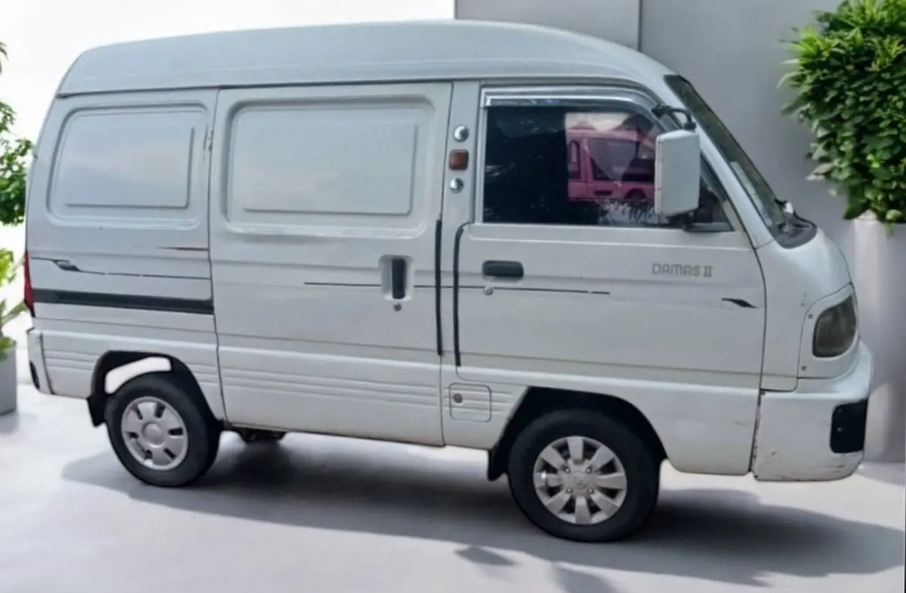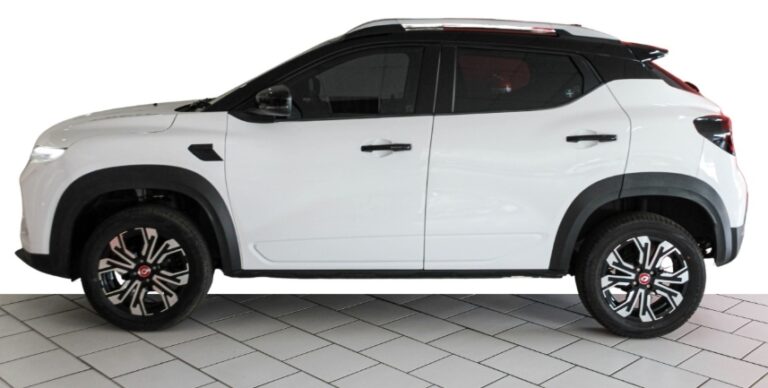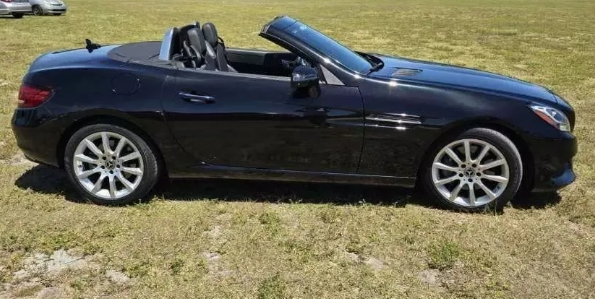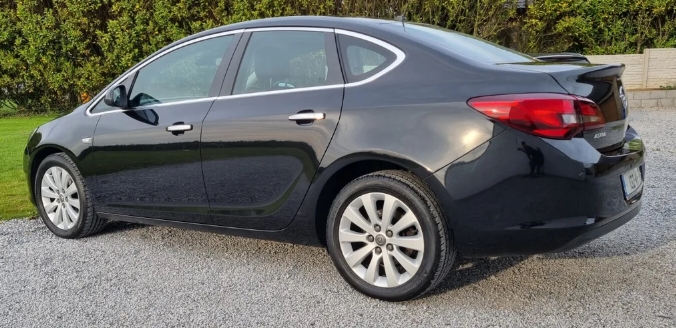The Evolution of the Daewoo Damas
Introduction
The Daewoo Damas is a compact, lightweight commercial vehicle that has become a staple in various markets, particularly in Asia and parts of Africa. Known for its practicality, affordability, and versatility, the Damas has undergone numerous changes since its inception in the late 20th century. This article traces the evolution of the Daewoo Damas, highlighting its production timeline, model variations, and trim levels across different generations.
Origins and Early Development (1989–2004)
Initial Launch and Development
The Daewoo Damas was introduced in 1989 by Daewoo Motors, a South Korean automaker that had rapidly expanded its international presence during the 1980s and early 1990s. The Damas was developed as a small utility vehicle intended for urban delivery, light cargo transport, and rural use. Its design was influenced by existing Kei trucks and mini trucks prevalent in Japan, but it was tailored to meet the needs of emerging markets.
First Generation (1989–2004)
- Production Period: 1989 to 2004
- Platform: Based on the Suzuki Carry/Every platform, sharing many components.
- Design: Compact, boxy body with a cab-over-engine configuration, maximizing cargo space.
- Engine Options: Primarily equipped with small-displacement petrol engines, such as 0.8L and 1.0L units, with some markets offering diesel variants.
- Models and Trim Levels:
- Standard: Basic cargo configuration, minimal interior features.
- Deluxe: Added comfort features such as upgraded seats and interior trims.
- High Roof: Variants with increased roof height for larger cargo capacity.
- Market Presence: The Damas was particularly popular in South Korea, India, the Middle East, and Africa. Its affordability and ruggedness made it a favorite among small business owners and farmers.
Key Features of the First Generation:
- Durable chassis and simple mechanics suitable for rough usage.
- Rear-wheel drive layout.
- Manual transmission, typically a 4-speed gearbox.
- Basic safety features by the standards of the time, mainly seat belts and minimal structural reinforcement.
Transition and Second Generation (2004–2011)
Evolution and Upgrades
In 2004, Daewoo launched the second-generation Damas, marking a significant upgrade in design, comfort, and performance. This coincided with GM’s global restructuring efforts, as Daewoo had become part of General Motors by this period.
- Production Period: 2004 to around 2011
- Design Changes: Modernized exterior with more rounded styling, improved aerodynamics, and increased cargo space.
- Platform: Based on the updated Suzuki platform but with significant modifications by GM.
- Engine Options:
- 1.0L and 1.2L petrol engines.
- Diesel variants, such as 0.8L and 1.0L turbo diesel units, especially for markets with diesel preferences.
- Models and Trim Levels:
- Standard: Basic utility model suitable for delivery and small cargo.
- Cargo: Focused on maximum cargo space, minimal interior features.
- Luxury/Comfort: Some markets introduced trims with improved interiors, power steering, and better seating.
- Microvan Variants: In some regions, the Damas was offered as a microvan with additional passenger capacity.
Features and Innovations:
- Enhanced safety features, including improved braking systems.
- Introduction of optional power steering.
- Upgraded suspension for better ride comfort.
- The vehicle retained its rear-wheel-drive layout and manual transmission options.
- Some markets saw the introduction of air conditioning and upgraded interiors.
Market Adaptations
During this era, the Damas expanded into new markets, especially in Africa, South Asia, and the Middle East, where it became a preferred commercial vehicle due to its simplicity and reliability.
Third Generation and Modernization (2011–Present)
Latest Developments
Starting around 2011, the Daewoo Damas received further updates to meet modern standards and regulatory requirements. Although the nameplate continued, the vehicle’s design and features became more refined.
- Production Period: 2011 onwards (with regional variations)
- Design and Platform: Slightly more aerodynamic styling with a more modern front grille and headlights. The platform was further refined for safety and comfort.
- Engine Options:
- 1.0L and 1.2L gasoline engines.
- Diesel variants, including 0.8L and 1.0L turbocharged diesel engines.
- Compliance with Euro IV and Euro V emission standards in some markets.
- Models and Trim Levels:
- Standard/Basic: Emphasized durability and low cost.
- Deluxe/Comfort: Added features like air conditioning, better interior trims, and upgraded seats.
- Cargo and Microvan: Variants designed for cargo, passenger transport, or mixed-use.
- Special Editions: Occasionally, regional special editions with cosmetic upgrades or additional features.
Features and Innovations:
- Introduction of power steering as standard or optional.
- Improved safety features, including better braking systems and optional airbags in some regions.
- Enhanced suspension for improved ride quality.
- Optional features such as central locking and upgraded audio systems in higher trims.
- Emphasis on fuel efficiency and emission compliance.
Market Position and Usage
Today, the Damas remains a vital commercial vehicle across many developing countries. Its low cost, ease of maintenance, and adaptability have kept it relevant despite increasing competition from newer models and alternative vehicle types.
Models and Trim Levels Summary
Throughout its production, the Daewoo Damas has been offered in various configurations tailored to regional needs:
| Era | Models/Variants | Common Trim Levels | Key Features |
|---|---|---|---|
| 1989–2004 | Cargo, Deluxe, High Roof | Basic, Deluxe | Simplicity, ruggedness, cargo capacity |
| 2004–2011 | Standard, Cargo, Luxury, Microvan | Base, Comfort, Premium | Improved safety, comfort features |
| 2011–Present | Basic, Deluxe, Cargo, Special Editions | Entry-level, Mid-range, High-end | Modern styling, safety, and efficiency |
Global Market and Regional Variations
The Daewoo Damas was not sold globally as a single uniform model but was adapted to meet regional requirements. For example:
- South Korea: Known as the “Daewoo Damas,” with variants tailored to urban delivery.
- India: Sold through GM India (later Chevrolet), often with localized features, and known for its affordability.
- Middle East & Africa: Valued for its durability and simplicity; often used as microbuses and cargo carriers.
- Southeast Asia: Popular for small businesses, with some markets offering LPG variants.
.
THIS might be a great place to get your new car from!
Or for those who are into the “car flipping” business, here’s an excellent resource for you!

.
Conclusion
The Daewoo Damas has demonstrated remarkable longevity and adaptability in the commercial vehicle segment. From its origins in the late 1980s as a basic mini truck, it has evolved through multiple generations, incorporating modern features while maintaining its core strengths: affordability, simplicity, and practicality.
Its extensive model and trim variations across different regions reflect its role as a versatile workhorse suited to various demands. Despite the gradual phasing out of some older models in favor of newer vehicles, the Damas continues to serve as an essential vehicle for small businesses and entrepreneurs worldwide, exemplifying the enduring appeal of straightforward, reliable transportation solutions.







